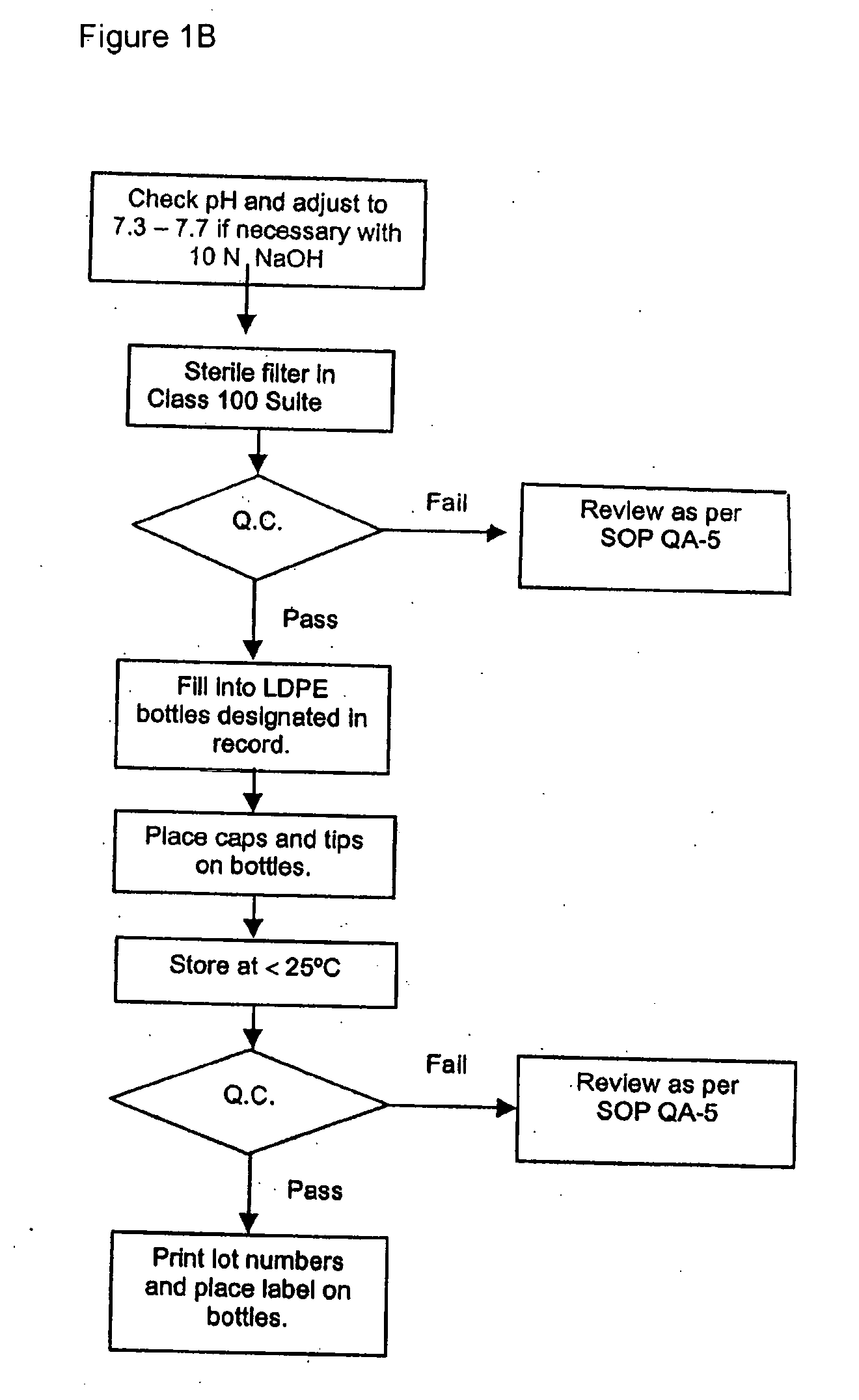Stable ophthalmic oil-in-water emulsions with Omega-3 fatty acids for alleviating dry eye
a technology of ophthalmic oil and omega-3 fatty acids, which is applied in the direction of biocide, plant/algae/fungi/lichens, drug compositions, etc., can solve the problems of oxidative preservatives and non-polymer quaternary amines not being compatible with omega-3 fatty acids, and affecting the appearance of patients
- Summary
- Abstract
- Description
- Claims
- Application Information
AI Technical Summary
Benefits of technology
Problems solved by technology
Method used
Image
Examples
example 1
Method of Preparing Ophthalmic Solution
[0127] Detailed methods of preparing self-emulsifying compositions may be found in U.S. application Ser. No. 10 / 802,153, filed Mar. 17, 2004 which is incorporated herein by reference. The following example describes a one-component surfactant system. In this example, PEG-40 hydrogenated castor oil, a 40 mole ethoxylated derivative of hydrogenated castor oil, is exemplified. Reference is made to FIG. 1 and Table 1. FIG. 1 shows a flow chart for the method. Table 1 shows amounts of the various components for this example.
[0128] PEG-40 hydrogenated castor oil (Lumulse GRH-40, Lambent Technologies Corp., Skokie, Ill.) and castor oil were heated. The temperature must be high enough that all components are in the liquid state but not so high as to jeopardize the stability of the components. In the present example, a temperature of 60+ / −2° C. was used.
[0129] A small amount of the total water (1%) was added at 60+ / −2° C., to form a transparent white...
example 2
Characterization of Emulsions Containing HA
[0135] Empirical data has shown that hyaluronic acid in certain concentrations can destabilize the emulsion, so as to cause creaming. Examples 2 and 3 illustrate stable and unstable combinations (designation of “unstable” indicates that creaming was observed) with the emulsion formulation and sodium hyaluronate. The formulations in the following examples were prepared essentially as described in Example 1.
TABLE 2Emulsion formulations for Example 2.Ingredients% w / w% w / w% w / w% w / wSodium hyaluronate0.10.20.30.4Castor Oil1.251.251.251.25POE(40) Hydrogenated Castor1111OilSodium Chlorite65 ppm65 ppm65 ppm65 ppmWSCP 3 ppm 3 ppm 3 ppm 3 ppmBoric Acid0.60.60.60.6Sodium Borate Decahydrate0.0350.0350.0350.035Calcium chloride dihydrate0.0060.0060.0060.006Magnesium chloride0.0060.0060.0060.006hexahydratePotassium chloride0.140.140.140.14Sodium chloride0.350.350.350.35Purified waterQSQSQSQSEmulsion stabilityStableStableUnstableUnstable
[0136] Table 2 a...
example 3
Incorporation of HA to form a Stable Emulsion System when the HA Concentration is Low
[0137]
TABLE 3Emulsion formulations for Example 3.Ingredients% w / w% w / w% w / w% w / w% w / wSodium0.050.20.30.50.7HyaluronateCastor oil0.3130.3130.3130.3130.313Lumulse GRH-400.250.250.250.250.25PHMB (ppm)1 ppm1 ppm1 ppm1 ppm1 ppmDibasic sodium0.120.120.120.120.12phosphate (7H2O)Monobasic0.010.010.010.010.01sodium phosphate(H2O)Edetate disodium0.010.010.010.010.01Taurine0.050.050.050.050.05Potassium0.140.140.140.140.14chlorideSodium chloride0.750.750.750.750.75Purified waterQSQSQSQSQSEmulsion stabilityStableStableUnstableUnstableUnstable
[0138] Table 3 shows that stable oil-in-water emulsions were obtained when the HA concentration is 0.2 w / w % or less, even when the emulsion concentration is lowered to one fourth of the concentration of Example 2 (Table 2).
PUM
 Login to View More
Login to View More Abstract
Description
Claims
Application Information
 Login to View More
Login to View More - R&D
- Intellectual Property
- Life Sciences
- Materials
- Tech Scout
- Unparalleled Data Quality
- Higher Quality Content
- 60% Fewer Hallucinations
Browse by: Latest US Patents, China's latest patents, Technical Efficacy Thesaurus, Application Domain, Technology Topic, Popular Technical Reports.
© 2025 PatSnap. All rights reserved.Legal|Privacy policy|Modern Slavery Act Transparency Statement|Sitemap|About US| Contact US: help@patsnap.com


